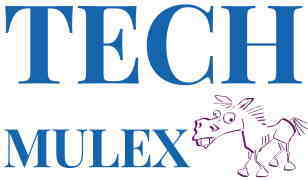In the past two years, there have been two major historical events. First of all, there was the entire issue with the pandemic that stopped the world from spinning as it should. Every country was impacted, and every single human being was impacted. Just as we were starting to slow down the spread and minimize the impact of the virus, another major historical event happened.
Russia decided to invade Ukraine, and no one knows what’s going to happen next. After the Cold War, this is the closest time we’ve ever been close to a nuclear war that can wipe away modern civilization. In times like these, people are scared about what’s going to happen to their assets. Follow this link for more info https://www.voanews.com/a/sudan-looks-to-gold-to-boost-economy-denies-russian-smuggling-/6479240.html.
At the moment, we can all feel the effects of these events since inflation is going on a rampage. Usually, after such a high percentage, there’s bound to be a recession. This effect is long overdue, and it was supposed to happen in 2020, but the government artificially boosted the economy and postponed the effect to another date in the future.
It seems like the date is coming closer every passing day. Recessions are a hit to the economy, and the last one happened in 2008. For a number of years, the economy recovered, and even though the rates were at 1.3 percent, that was much better than nothing.
How does gold come into the mix?
People have an interesting relationship with this precious metal. When times are good, and everything is in a state of peace, they don’t want it. However, when times are bad, and everything is taking a turn for the worse, this is the only currency and money form they cling to. It’s an asset that’s recognizable around the globe, and every culture has kept its wealth in it.
The United States government is particularly fond of it since they banned all private ownership of this precious metal in the year 1933. At that time, their advice was for their people to buy government bonds and leave the gold to the central banks so they could safeguard it. Click here to read more.
After 40 years, that ban was taken off, and Americans could become the private owners of the best investment in the world, which is gold. However, during those 40 years, another form of propaganda emerged, which was that Treasury bond bills were the ultimate risk-free asset.
That was all written in financial literature, and that was the advice that was being presented in school. Also, those investments were historically profitable, and gold’s performance was erratic. Of course, that’s because they banned it.
However, when people could get their hands on this metal again, they started to rally for it for an entire decade before the price dropped again during the 80s and 90s. The second place goes to silver, which was much more volatile but offered better returns.
Why is it considered as a hedge against inflation?
The answer here is scarcity. There’s a limited supply of real assets in the world, which makes them valuable, and there’s also the law of supply and demand. At the moment, there’s a limited number of bullion and coins that can be bought and sold on the market.
When more people would buy instead of sell, then the price would become higher. If the opposite were to happen, then the price would dropdown. During times of inflation, everyone holds their assets and doesn’t want to sell them since they’re unsure about the future.
This causes the prices to increase, and the constant influx of cash by the Federal Reserve only makes matters worse. That’s one of the reasons why we’re living in a transitory time.
How is it taxed?
Like every other asset class, gold is taxed by the Internal Revenue Service. However, if you know how to classify it, you might get a discount on the tax on selling gold and profit more. Here’s how that works. This precious metal is considered to be a collectible.
That’s along with palladium, platinum, silver, specific types of alcohol, stamps, gems, antiques, rugs, and works of art. These collectibles are usually taxed at 28 percent, which is why a lot of investors run away from owning the physical asset. Most of the time, holders are worried about management fees, storage fees, and dealer markups, but in reality, the true cause for worry is the tax.
Luckily for you, there’s an easy way to bypass the 28 percent tax and lower it all the way to 15 percent. If you decide to keep the asset into a Passive Foreign Investment Company, then you can get an 8 to 13 percent decrease in your tax bracket, as long as you’re not a corporate investor. You need to complete a form and make a Qualifying Electing Fund, which will make it much easier for you in the future.
There are only two forms, and the annual election is definitely worth it. Let’s say that you buy single bullion at 50 000 dollars and you decide to sell it five years later at 75 000 dollars. The taxes you’d need to pay would only apply to the 25 000 dollars that are the growth of the investment, and it would come out to 8 000 dollars. If you went for a PFIC, you could decrease the cost to 5 000 dollars. That way, you’ll be saving 40 percent on the money you’re paying in taxes.
